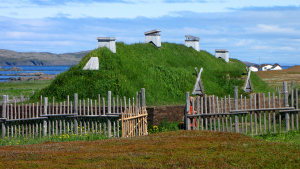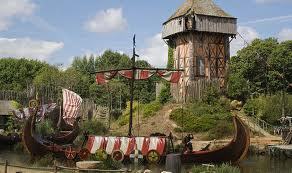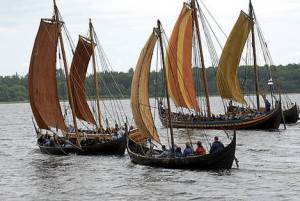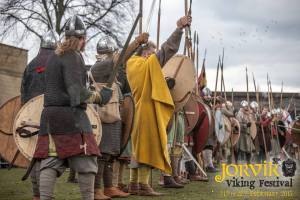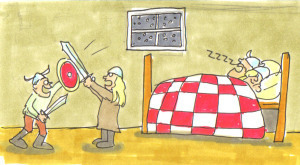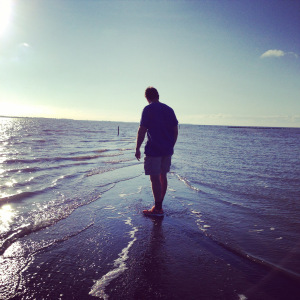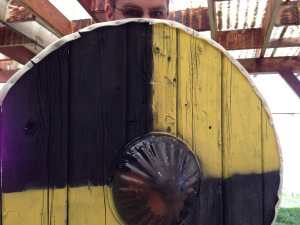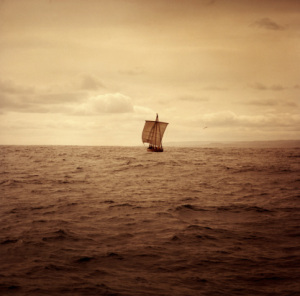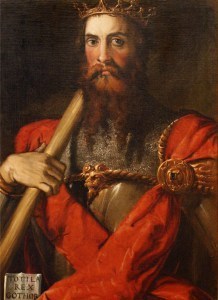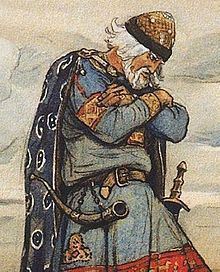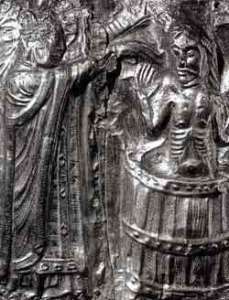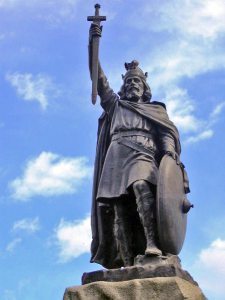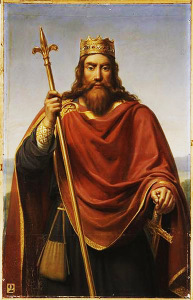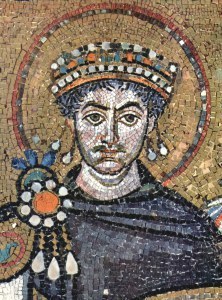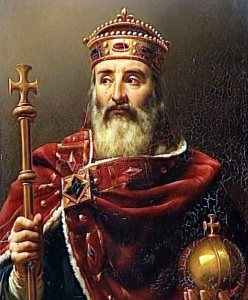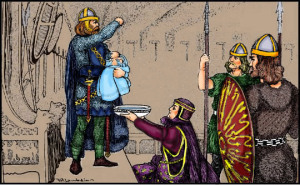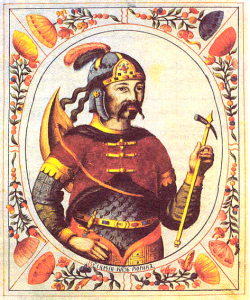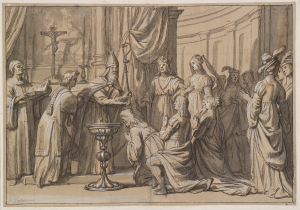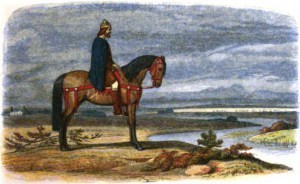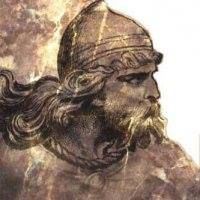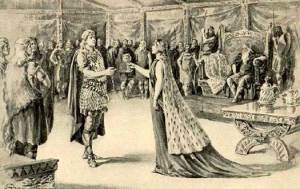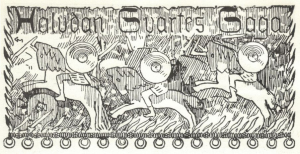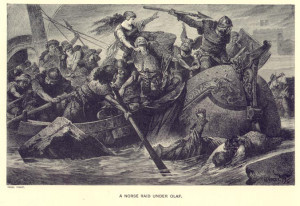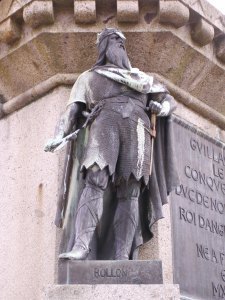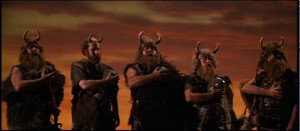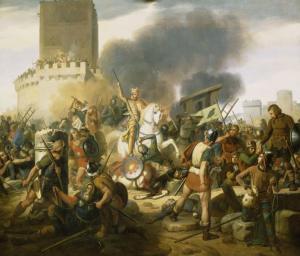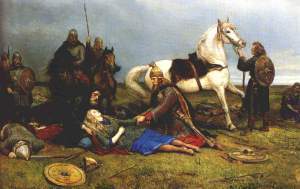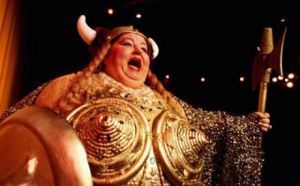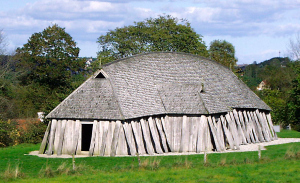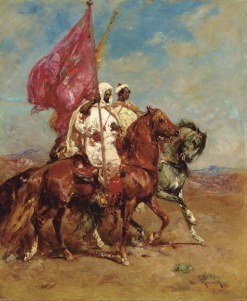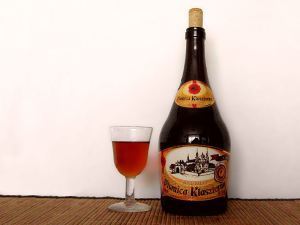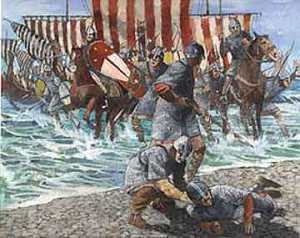C.J. Adrien's Blog, page 22
January 13, 2015
5 Must-Do’s for Viking Lovers
If you love the vikings, here are the five must-do’s you must add to your bucket list. (Click the pictures for more information on each place on their own site)
5. L’Anse aux Meadows, Canada
This groundbreaking site in the Americas continues to provide new and fascinating evidence in the lives of the Norse Settlers who lived there. Today you can find a recreation of a longhouse in the same dimensions and using the same materials found in excavations. This is certainly a must-see spot for any lover of Viking history.
4. Puy du Fou, France
This historical theme park features a one of a kind show about the Vikings. Although they stray into fantasy (it is after all a show), the choreography and costumes will have you entertained to the end. If you want to see a Viking raid live with fire and explosions, this is the place to go.
3. Lofotr Viking Museum, Norway
Nestled in the fjords of northern Norway, this museum offers a state of the art recreation Longhall fit for the kings of old set among the background of beautiful Norway. If the countryside and recreation village aren’t enough, take a tour of the fjords on a professionally sailed Longship to feel the wind in your hair and the salt on your face.
2. Viking Ship Museum in Roskilde, Denmark
Learn everything there is to know about Viking ships through an array of captivating exhibits. The museum also hosts guest exhibits and even offers sailing lessons so that you can learn how to sail a Longship. Think you have what it takes to sail one? Try your metal at Roskilde.
1. Jorvik Viking Festival in York, England
This is the big show in the Viking world. Their festival trumps all others, boasting hundreds of reenactors dressed in historically accurate garb, a reenactment village where one can watch true artisans creating a variety of crafts, longships to ride, and an overall complete Viking atmosphere that is an envy to museums across the globe. The Jorvik Viking Festival is everything a viking lover could ever want.
There are of course several other Viking centers of note, all of which are not featured in this list but worth a look, including the museum in Oslo. Enjoy!

January 8, 2015
5 Signs You Might Be a Viking
In a previous blog, I discussed the propensity for various populations to have a smudge of Viking blood. But to be a Viking is a way of life, not a strict genetic affiliation. The Vikings recruited among the people they visited and often brought those people back North with them. Thus, anyone can potentially be a Viking, and the following five signs may indicate that you are one.
5. On occasion, you drink in the morning.

In the Dark Ages, water was often putrid and undrinkable. Although they did not know about germs specifically, the Vikings knew that when they mixed a little mead with whatever they were drinking, they were less likely to run off to the cesspit with dysentery. This led to a wonderful phenomena called morning drinking. While morning drinking is no longer a necessity, it remains a culturally Viking behavior.
4. You can sleep through ANYTHING.
Life was difficult on the open sea, and longships weren’t known as luxury cruise lines. Only the most rugged survived long voyages for their ability to sleep anywhere and through anything to be able to get good rest. They also didn’t worry too much about anything while sleeping. In fact, the Vikings had a saying about sleep: “A fool is he who lets his troubles keep him awake at night, for he will be too tired to fix them the next day.”
3. No matter where you live, you yearn for the sea.
The Vikings lived and died by the sea. Although some travelled up rivers into mountainous areas, their roots originated on the waves of the great big blue. The salty spray from the ocean is familiar to Vikings, and something they miss if kept away too long.
2. You have built your own shield.
To an experienced warrior, shield building is an elementary skill. While essential in combat, Viking shields were light and disposable, and often broke after one use. Warriors had to build many shields over their lifetime (if they were any good at fighting), and building a shield was a necessary skill taught to young warriors to make them self sufficient. Building a shield also demonstrates a propensity for craftsmanship, a trait the Vikings possessed which allowed them to build their ships, arms, and tools.
1. You love to travel and learn (and acquire new things).
A skaldic verse from Egill Skallagrimson paints the picture of what once was considered the perfect Viking; created impatient from birth, presumptuous, and with a burning desire for a far-off adventure: “My mother promised me, and soon she will buy me, a vessel and oars, to leave to distant lands with the Vikings.” If you don’t like to travel, you are not a Viking.

January 3, 2015
10 of the Most Influential Rulers of the Dark Ages.
This list is not exhaustive. It is intended to introduce prolific rulers of the Dark Ages to readers who then may feel inspired to research these important characters of history further and on their own.
10. Nominoë
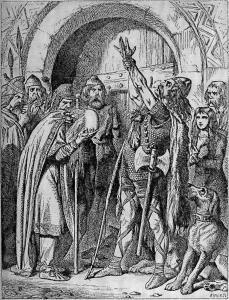
Nominoe’s Vow, a Victorian illustration to a ballad about Nominoe in Barzaz Breiz in which he vows vengeance on the Franks for killing a Breton emissary
An early Duke of Brittany, Nominoë revolted against the Frankish Empire successfully while cunningly allying himself with the Danish invasions of Normandy. Brittany would retain its independence from the French crown for more than five hundred years thereafter.
9. Totila
Leader of the Ostrogoths in the 6th Century, he successfully turned the tide of war against the Byzantine Empire who at the time had reclaimed a significant portion of the former Roman Empire. His skill as a tactician and as a politician earned him great renown with all the other German tribes.
8. Oleg of Novgorod
Although never the official ruler, he sat upon the throne of Novgorod as regent until the heir apparent was old and wise enough to rule. Oleg moved the capital of the Principality of Novgorod to Kiev and consolidated royal power for the Varangians over the Slavs, and is considered the architect of the later Russian Dynasty.
7. Harald Bluetooth
This king of Denmark consolidated power in a formerly divided territory and influenced the development of several other kingdoms including Sweden, Norway, England, and Normandy. His legacy is mixed as he was defeated later in his reign, but his influence on the politics of Northern Europe helped to shape that region into what it became in the Medieval period.
6. Charles Martel
Charles’ legacy remains one of the greatest in European history. It is he and his army who stopped the Islamic army from invading Europe at the battle of Tours (which was actually closer to Poitiers). He was one of the most successful Frankish rulers of the time whose family would reshape Europe.
5. Alfred the Great
At the height of his power, Alfred was the most powerful man in Britain. His successful resistance to the Vikings earned him political favors among neighboring kingdoms. His military genius was renown, and he presided over the most advanced intellectual centers in Christendom of the day.
4. Clovis
The first to unite the Frankish tribes, Clovis carved out a kingdom in the former Roman province of Gaul in the vacuum following the collapse of the Roman Empire. His military genius was unmatched in his life. He is most remembered for his early conversion to Christianity which allowed Christendom to expand and flourish further north. Without his influence, Christianity may have died out in many parts of Europe.
3. Tariq ibn Ziyad
This early Muslim ruler conquered the Christian Visigothic kingdoms of Iberia and saw the expansion of Islam reach the feet of the Pyrenees. He was a keen strategist, and instituted a system of governance in Cordoba that endured nearly seven hundred years (until the end of the Reconquista in 1492). His legacy is more than visible in Spain today where evidence of his rule is still apparent in the culture, architecture, and some linguistic vestiges as well.
2. Justinian I
Ruler of the Byzantine Empire (formerly known as the Eastern Roman Empire) in the 6th Century, Justinian had ambitions to reestablish the Roman Empire to its former glory. His numerous successful military campaigns saw his power reach as far as Carthage in North Africa and Rome in Italy. His exploits would likely have been successful, and he might have reconquered all formerly Roman lands if not for the awful luck of having had the Bubonic Plague infest his capital city. Justinian himself died from it.
1. Charlemagne
No doubt the most famous ruler of the Dark Ages, Charlemagne conquered the largest amount of territory in Europe since the Roman Empire. He instituted a strict law code across his lands and formed a new, more efficient type of hierarchy to rule over his lands which would later become the model for Feudalism. His armies carried with them more than just weapons as well. Charlemagne saw himself as a messenger of God and forced the people he conquered to convert. He is also credited as having invented public education, but of course this was reserved for the upper classes and not the peasantry. So important was he that the knights of the High Middle Ages legitimized their claim to the nobility by tracing their ancestry back to Charlemagne. If a knight could not trace his family tree back to Charlemagne, he was not considered nobility and was barred from being eligible to be a knight. It must be noted that most of these ancestral claims were fictitious and were frequently fabricated…at a price.
December 30, 2014
The Top 10 Most Notorious Warlords of the Viking Age
This list is not of legendary warriors from myth (such as Ragnar Lodbrok), but of the true, historically verifiable men who lived during the 9th, 10th, and 11th centuries.
10. Gudrod the Hunter
This petty king from Vingulmark (in the Oslo Fjord) conquered all his neighbors with ruthless determination. He is the father of the famed Halfdan the Black, and grandfather to Harald Fairhair, the first ‘King of Norway.’
9. Rurik, Prince of Novgorod
Rurik is credited as having founded the city-state of Novgorod and as having begun the Varangian dynasty which ruled over Kievan Rus (modern day Ukraine). His seizure of lands in the 9th century made his personal fiefdom one of the largest in land area of the time. His people’s reputation of unmatched prowess earned them an invitation to fight as mercenaries for the Byzantines, and were aptly named the Varangian Guard.
8. Harald-Klak
As a rival claimant to the throne of Jutland (Denmark), this warlord converted to Christianity in the early 9th century to rally the support of the Franks for his claim. His rival King Horik eventually conceded to Harald and split the rulership of Jutland so that there could be two kings at once. Harald was then given the title of king of Jutland, and was able to travel to far-off lands to raid at his leisure. Harald-Klak is thought to have travelled as far as North Africa during his exploits.
7. Guthrum, King of Danelaw
Guthrum began his career as a mercenary who fought in the British Isles. With an understanding of the political structure of kingdoms there, he led the invasions of East Anglia by the Danes and through force of brawn carved out the territory we know today as Danelaw. Though he was eventually defeated, his reign was on marked by brutality and relentless expansion.
6. Bjorn Ironside
Son of the legendary king Ragnar Lodbrok, he gained tremendous wealth through raids and Danegeld payments in France and Britain. He eventually became a king in Sweden. He is considered semi-legendary because most of what we know of him comes from various Sagas, but his name and reputation are verified by clerical sources from the 9th century, indicating a flesh-and-blood man who had a successful career in raiding.
5. Turgeis
A prominent figure in Irish history, Turgeis had a successful raiding career before founding Dublin, and in doing so beginning the Viking invasions of Ireland. His reputation was one of fear and trepidation for all who stood in his wake. Interestingly, he was a learned man who enjoyed learning about new cultures. He even accepted a Moorish diplomat into his court who wrote about him at length, even though he was more under the impression that the diplomat was his wife’s new favorite pet.
4. Olaf the Brash
Olaf was a chieftain from Sweden who conquered Denmark in the early 10th Century. He founded the house of Olaf which would rule over Denmark from then on. Although his reputation is not explicitly stated in the sources about him, his ability to quickly and effectively conquer Denmark—home to several others on this list—is a testament to his prowess.
3. Halfdan the Black
Son of Gudrod the Hunter, Halfdan inherited the throne of Vesfold as a child. His mother Asa (of Osberg ship fame) raised him to be a ruthless ruler. By the age of 17, he had already fought several successful engagements against his neighboring rival Gandalf, who eventually capitulated to the young man’s ambitions. Not only were his military exploits successful, but he also knew how to conduct diplomacy effectively. Through careful negotiations, he added his half-brother Olaf Geirstad-Alf’s lands to his own, making him the first ruler of a united Vingulmark (Oslo fjord). His exploits paved the way for his son Harald Fairhair to unite Norway and become the first recognized king of all of Norway.
2. Hastein
A supposed son of the legendary Ragnar Lodbrok, Hastein is a verified force of history. He had successful exploits in France, Britain, Spain, and even Italy. He is most famous for his travels to the Mediterranean Basin in which he fought the Moors, the Asturians, the Berbers, among others. He is credited as having used the Island of Noirmoutier as a base to raid the Loire River Valley. Hastein disappeared from history around 896, but by then had earned the reputation of a “lusty and terrifying old warrior of the Loire and the Somme.”
1. Rollo, Duke of Normandy
While perhaps not as adventurous as Hastein, Rollo is the founder of Normandy and its first duke. His ability to win over political rivals (such as the King of France) made him a formidable foe who could not always be dealt with in the simple terms of battle. His descendants became the Dukes of Normandy, the most famous of which was William, the founder of the English crown. Therefore, Rollo has earned this top spot as most notorious Viking because he carved out his place in history forcefully as the father of the Kings of England and Normandy.
Sponsored Ad

December 28, 2014
The Allure of the Vikings

The world has produced many civilizations worthy of close study and adoration, but none have done so quite as serendipitously as the Vikings. All curricula of schools of Western countries include some mention of the Vikings, whether it be a small albeit interesting footnote about the Middle Ages, or a more in-depth analysis of their activities in countries such as France and England. Regardless of the depth, the mere mention of them tends to be entrancing to all who first encounter them. This all begs the question: What lends to their appeal?
The answer: The Vikings have classically been the Antagonists of history. Their demise was used as the symbol for the triumph of civilization over the “Noble Savage.”
For most, the Vikings are a mysterious people. Not everyone has the time to study their culture and history in depth. What they know of the Vikings comes from popular culture snippets such as those offered by the History Channel or the BBC. In this light, they are portrayed as a barbaric group who savagely carved their way through Christendom leaving a trail of destruction in their wake. The Vikings have thus earned an appeal as frightening figures in history capable of giving a good scare. They make excellent antagonists in fictional stories and their reputation is effective at stirring the emotions of those who see or hear those stories. That is their allure today, as made evident by the plethora of Viking-themed media.
This reputation for bloodlust and violence we have today stems of course from another source. Beginning in the 19th century, historians began to explore the history of the Vikings in more depth. The sources they had to formulate their arguments for the structure of Norse society were primarily the writings and chronicles of Christian writers. These writers did not paint a positive light of the Vikings who often raided monasteries for their riches. This would all have been for naught if the political climate in Western Europe in the 19th Century had been different. Unfortunately for the Vikings, Europeans were in the full swing of their imperial exploits, desiring to achieve wealth and to spread their culture across the globe. As historians produced more works about the Vikings, the people of Europe began to read them, and in doing so began to shape their views of the Vikings through the cultural lens of their time.
Seeing the Vikings as savages from the north, the Christians of the 19th century saw an opportunity to make a historical analogy to the conquests of the day. In America, the European immigrants on the East coast were pushing west as part of their “Manifest Destiny” and encroaching on the lands of the Natives already living there. Similarly, European settlers in Indonesia, Australia, Africa, and South America were attempting to reconcile their bellicose takeovers of their new lands with the decimation of indigenous human populations. Alas, they found their shining example from history which they could use to justify their exploits: the Vikings. In the Vikings they saw savages akin to those they met in far-off lands. Yet despite this dehumanizing categorization of an entire population, they recognized them as having a moral code, or a code of honor. Thus was born the idea of the “Noble Savage.”
The Vikings were savages who threatened the “civilized” peoples of Europe for over a century. In the end they were brought into the fold and converted to Christianity for their own betterment. This was the narrative to be used and applied to encounters with other hostile peoples across the globe. In the United States, the “Noble Savage” ideal was applied to the Plains Indians who to this day are woefully the most overused exemplification of Native Americans whose true cultural complexity is mostly lost on a majority people. As the idea of the Noble Savage proliferated European culture, so did the Vikings. Suddenly, there were books, plays, and even entire symphonies dedicated to the Noble Savages of Scandinavia, not the least being Richard Wagner’s “Ring of the Niebelung.” It was in the production of this opera in Berlin in 1889 that the Vikings earned their horns which were an invention of the opera’s prop manager.
Noble Savages were the antagonists to civilization. Their demise was used as the symbol for the triumph of civilization over the “Noble Savage.” Europeans unashamedly considered themselves more civilized than the peoples they encountered across the globe and thought it their duty to bring those people into the fold of their worldview. One need look no further than Rudyard Kipling’s “The White Man’s Burden” for evidence of this. The Vikings were used as a metaphor to spread these ideals and to justify them. We now know that the Vikings were not necessarily the bad guys (although they did a lot of bad stuff—but who didn’t in those days?). Historians are increasingly realizing that the true villains during the Viking Age were in fact the “civilized” peoples. There is no truer statement than “history is written by the winners.” This unfortunately is how the Vikings earned their reputation and came to have such an allure to society. Today there is much revision being conducted in the field of Scandinavian history. Their story is being rewritten outside the narrow vision put forth by scholars of the 19th century. Increasingly, people are beginning to view the Vikings less as Noble Savages and more as the complex, culturally rich people they actually were. This same assertion is true for the study of many cultures around the world. It is an exciting time to learn about the Vikings for there seems to be new discoveries every day which are adding to our breadth of knowledge of this previously under-understood people in history. For now, however, the idea of the “Noble Savage” is still the most alluring aspect of them to the majority of people.
December 21, 2014
Three Facts You Didn’t Know About the Vikings
According to findings, women had defined roles in knitting and cooking, but also in managing thralls (slaves) and running the farm. If a woman’s husband were away for war or raiding, she also took the role of defender of the land and would have taken up arms to defend that land if attacked. Upon a warrior’s death, his land and belongings went to his wife who had no real obligation to remarry and therefore could, if she so pleased, take over her late husband’s role as the head of household. If a warrior and his wife died without a male heir, the land and property would be passed on to the eldest child regardless of gender. The reason the Vikings gave their land to their wives upon their death is because a marriage in Scandinavia was a contract in which both parties entered as equals. All material possessions were recognized as given to the newlywed wife for protection.
Sources:
- Jochens, Jenny M. Women in Old Norse Society. Ithaca: Cornell University Press. 1995.
- Macnamara, Jo Ann and Suzanne Wemple. “The Power of Women through the Family in Medieval Europe, 500-1100.” in Clio’s Consciousness Raised: New Perspectives on the History of Women. eds. Mary Hartman and Lois Banner. New York: Harper & Row, 1974.
Fact 2: The Vikings sometimes used ships as roofs in winter.
There is mention in the Russian Primary Chronicle and select other sources that during long stays in the East, the Rus sometimes flipped their ships and used them as the roofs of temporary buildings. This was most common during trade meetings, and they did not stay long. The practice earned them the name of warrior-tradesmen among the Slavs who never knew if the Rus came to trade or raid.
Sources:
- Blöndal, Sigfús. The Varangians of Byzantium. London: Cambridge. 1978.
- Ellis-Davidson, Hilda Roderick. The Viking Road to Byzantium. London: George Allen & Unwin. 1976.
- Holthoer, R. Birch-Bark Documents from Novgorod Relating to Finland and Scandinavia. Acta Universitatis Uppsaliensis 19. Uppsala: University of Uppsala. 1981.
Fact 3: The Vikings Nearly caused the utter annihilation of Christianity in Iberia.
When most people think of Spanish history, they tend to remember the Moorish conquests, the reconquista, El Sid, etc… Rarely are the Vikings evoked. However, the Vikings were heavily present in Spain (as well as pretty much everywhere in the known world at that time) and affected the social-political didactic that existed there in the early 9th century. In fact, a Viking raid on Seville in 844 AD, which was under Moorish control, prompted the Caliph of Cordoba to militarize more aggressively. This further militarization put the weak Christian kingdoms in the region of Asturias at risk for disappearing. Luckily for the Asturians, the Vikings continued to attack islamic cities as far as North Africa, which kept the Moors of Spain preoccupied to the south.
Sources:
- Stefansson, Jon, “The Vikings in Spain. From Arabic (Moorish) and Spanish Sources.” In Saga-Book of the Viking Club: Vol. VI Proceedings. University of London King’s College, 1909.
December 18, 2014
5 Facts Everyone Should Know About the Vikings.
In modern popular culture the Vikings are more myth than fact. Here are a few things we should all know about the Vikings because as it turns out, they had more to do with the development of Western Civilization than most people realize.
1. They did not wear horns.
A horned helmet is not functional in battle. Any blade swung down from atop would catch on a horn and cause tremendous damage to the wearer’s head. Instead, the Vikings wore what any sensible warring culture would have worn at the time: a rounded or slightly pointed crest designed to deflect blows to the head. Pictured below is photograph of a recovered helm from the Viking age and is beyond doubt what most Vikings would have worn.
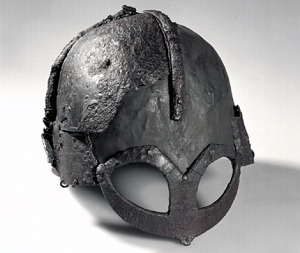
The real Viking Helm.
2. The word ‘Viking’ is a modern invention.
The origins of the term Viking and its usage are a hotly debated topic. What is not debated is the fact that it is not a word that was used during the Viking Age. Vikings were then referred to by the varied peoples of Europe they interacted with as Northmen. The best evidence for this can be found in France where one of their most popular tourist destinations is the region of Normandy, aptly named after its founders. “Nor-man-dy” in modern English is “North-man-Land”, a region settled by Danish Vikings in the 10th Century. The word Viking is thought to come from the old Norse word Vikingr, which translates roughly to sea rover or pirate. In the Viking age, the Northmen would have identified as men from their region of origin. For example, men from the modern day region of the Oslo Fjord would have called themselves Vestfaldingi, or Men of Vesfold in modern English. This fact is well documented in a christian chronicle, Annales Bertoni (the Annals of Bertrand) who wrote of the disastrous sack of Nantes in 843 A.D. and referred to the attackers as Vestfaldingi, which means when the Vikings were attacking the city, they let everyone know where they were from.
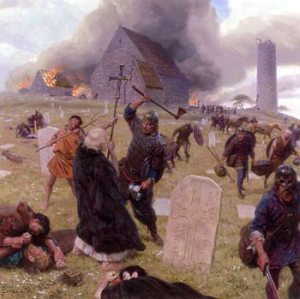
The sack of Nantes by the Vestfaldingi.
3. The Vikings were prolific tradesmen.
Most people think of the Vikings as pillaging, raping, sacking marauders without purpose. In reality, they began their journeys on their longships as tradesmen. Evidence in the writings of various chroniclers of the late 8th Century from the Frankish Empire of Charlemagne make mention of Northmen as simple tradesmen whose wares included furs, timber, and blubber. It was not until a decree by the Frankish Empire to close off trade to all non-Christians that tensions began to rise. Early raids on the Frisian coast (modern day Holland) pre-date the accepted beginning date of the Viking Age in 793 with the sacking of the English monastery Lindisfarne. The Vikings did not only trade with the West. They also travelled far to the East along the Dnieper and Volga rivers (In modern day Russia and Ukraine) in search of trade partners, some traveling as far as Constantinople (then known as Byzantium, and now known as Istanbul). The Byzantines were so impressed by the Vikings that they even hired some of them to become the Varangian Guard, whose duty it was to protect the Emperor. Therefore, it is important to remember the Vikings first and foremost as prolific tradesmen and explorers, rather than the tainted view that they were savages of unrelenting cruelty.
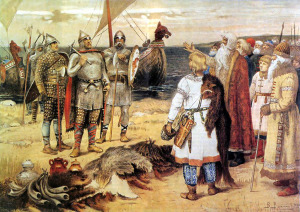
The Rus trading furs with the Slavs.
4. They were intrinsically interested in learning.
While the church in Western Europe contented itself with a monopoly on knowledge, the Vikings fostered a culture of learning which benefited them greatly at the beginning of the Viking Age. They were encouraged to explore their curiosity. The acquisition of knowledge was considered a valuable resource. We know about this aspect of their culture partly because of their mythology, and partly because of archeological finds which suggest the import of technology. In mythology, their leading deity Odin was obsessed with the acquisition of knowledge. He sacrificed an eye, for example, to learn about the Norse end times Ragnarok. In archeology there have been finds which demonstrate a rapid succession of technological improvements in farming and warfare likely imported from abroad. The most popular of evidences lies with the discovery of the Ulfberht, a sword with purer steel than would be seen again in Western Europe for 800 years. It is surmised the technique they used to build such a weapon came from their travels in the East where historians propose they encountered the manufacture of Damascus Steel, another highly refined type of steel.
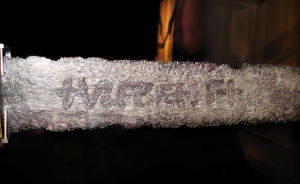
One of the only Ulfberhts ever found.
5. The Vikings were prolific progenitors.
If you don’t think you have Viking blood in you, think again. The Scandinavians of the Viking Age spread their seed and their people across the known world. Below is a list of modern countries and how likely you are to be a Viking descendant if you are from one of them.
England — the city of York was once the Norse city of Jorvik, and the Vikings at one point had carved out half of Britain for themselves in a territory called Danelaw. If your are British or Scottish, it is VERY likely you have Viking in you.
Ireland — the cities of Dublin, Wexford, Cork, Limerick, and others were all founded by the Vikings. If you are Irish, it is VERY likely you have Viking in you.
France — Normandy is the obvious region of France one thinks of when thinking of the Vikings. But Brittany (Bretagne) and the Vendée regions of France were both also heavily settled by displaced Scandinavians in search of a new home. If you are from Western France, it is VERY likely you have Viking in you. If you are from Central or Eastern France, it is not likely—those regions of France are basically German.
The Netherlands — heavily raided for centuries and colonized on several occasions. In the long run, however, the Franks maintained too strong a dominion over the region, causing the Northmen to flee. If you are dutch, it is SOMEWHAT likely that you have Viking in you.
Spain — the coast of Asturias was attacked several times by the Vikings. What’s more, they sacked Cordoba and inflicted great fear in the Moors. However, they did not colonize Spain heavily, therefore if you are from Spain or Portugal, you only have a SLIM chance of having Viking blood, but a chance nonetheless.
Italy — If you are from an area in Italy that was once part of the Norman kingdom of Italy, you are VERY likely to have Viking blood in you.
Russia, Ukraine, Poland, Estonia, Latvia, Lithuania, Belarus — Russia was named after the Swedish Vikings known as the Rus. The Rus helped to found the city states of Kiev and Novgorod, as well as Moscow. The Tsars considered themselves direct and proud descendants of the Rus. If you are from these regions, you are EXTREMELY likely to have Viking blood in you, especially if you are light skinned.
Turkey, Greece, Bulgaria — the Rus travelled as far as Byzantium and many stayed there to father children. There is a very slight genetic pool from Scandianvia there today.
Mongolia — although the Vikings never travelled as far as Mongolia, the Mongolian Golden Horde did invade and occupy Eastern Europe and brought back to Mongolia their favorite new pets — blue-eyed blonds. Today there is a recessive gene in Mongolia where children are born with light hair and blue eyes. Because we know about the Vikings in Russia, and we know blue-eyed blonds from Russia are the descendants of the Vikings (as opposed to the Slavs, the dominant ethnic group in many parts of Eastern Europe), then it is safe to assume there is Viking blood in Mongolia today as well. That, of course, we have Genghis Kahn to thank for.
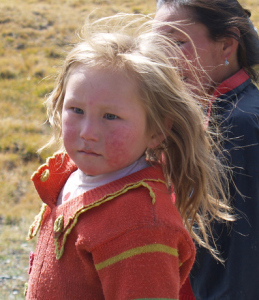
A Mongol girl with blond hair and blue eyes.
Sponsored

October 13, 2014
Mead 101
Of all the fermented drinks created throughout the world, mead is one of the least known and understood in popular culture. Although the word mead has proliferated the English language — and entered into mainstream popular culture recently — the drink itself is not commonly found on store shelves for the masses to consume. Much contention arises among connoisseurs who frequently argue over production methods and styles of fermentation, as well as which historical peoples may claim ownership over mead as a component of their cultural heritage. Those who enjoy Viking history, for example, tend to think of Mead as a Viking drink. Those who enjoy ancient Germany tend to consider mead a German drink. As it turns out, mead is a drink shared by many peoples from around the world in multitudes of varieties.
What is mead? The word mead derives from Old English, and is used to describe any drink made from the fermentation of honey and water. Other languages, of course, have differing names (i.e. Hydromel in French, or Mul in Persian). Many cultures throughout the world have created one form of mead or another over the course of history, making mead one of the oldest and widespread fermented drinks in history. Mead predates wine, liquor, and most forms of beer — except wheat beers which were first produced in Ancient Sumer. Most European countries, and some Middle East and African countries, can claim mead as a drink synthesized by their culture. Therefore, mead has a shared cultural heritage.
What are the types of mead? As with all fermented drinks, mead is fermented to varying degrees. Most meads can be classified into one of three categories: honey liquor (>18% alcohol), honey wine (12%-16% alcohol), and beer (
Why has mead not remained as popular as beer or wine? The answer to this question has several possible answers, yet the most viable explanations is production. Honey is more difficult and expensive to cultivate than wheat or grapes. Therefore, mead producers traditionally have not been able to keep up with demand as well as other fermented drinks. In Europe, this was compounded by the vast influence of post-Roman idealism spread by the Carolingian and its successor states. Mead became a specialty rather than the mainstream drink of choice by the early medieval period. Today’s resurgence in the popularity of mead demonstrates a willingness to try more exotic beverages, but it will not likely soon rival the larger beer and wine producers.
Should you try mead? Absolutely. It may not be for everyone, but it is a great tasting, gluten free alternative to beer and wine. Make sure to research the mead you wish to try to ensure it contains the alcohol content you prefer. I suggest Hydromel — or honey wine — produced in Brittany. It has a unique, smooth taste sure to please your pallet.
Mead is a prominent drink of choice in my novel, The Line of His People. They switch frequently from mead to wine, depending on what is available to them.


October 6, 2014
Fanmail
I will first preface with expressing my enjoyment of receiving fanmail. Thank you all who have written to me with compliments and questions, and I endeavor to respond to every fan. With that said, I would also like to announce that I will begin answering fan questions on my blog because there are so many great questions! Stay tuned once per week (hopefully Mondays) for a question and answer taken from fantail.
This week’s question is:
“Why did you chose to write your dialogue in contemporary English if it takes place in Viking times?”
My answer:
This question has surfaced more than once. When I began writing my novel, I considered writing the dialogue in a more antiquated style (as many authors do) to help set the mood of the time period. Many movies attempt to do this as well when creating period pieces, but they typically do a poor job and often mix-match various accents in English. Several authors have successfully pulled off antiquated dialogue, such as the work of Ken Follett and Bernard Cornwell.
My goal with the novel was to stay as true to history as possible. With that goal in mind, I examined the setting of The Line of His People and decided to write the dialogue in contemporary English for the simple fact that no one in the story is an Anglophone. Abriel is born and raised in France, and sails with Vikings from Norway. Therefore, writing in antiquated English — or Ye Olde English — would have been just as absurd as writing the dialogue in any other form of English because my characters did not in reality speak English. One must remember that in the time period in which I have written, no one spoke English or French — or Norwegian for that matter. Today’s languages have roots in the languages spoken in the early medieval period, but have changed into completely different languages since that time. In the novel, I explain that Abriel knows Frankish (really old French), Old Norse (really old Norwegian), Latin, and Greek. He learned three of these during his time at the monastery.
Since writing in an older or more antiquated form of English would not have made the novel any more historically accurate, I chose to write the dialogue in contemporary English to make my characters more identifiable with modern day readers. I wrote the novel as a Young Adult story, and I felt that young adults in their late teens and early twenties would enjoy language they could actually understand. As a teacher of the middle grades (grades 6-9), I know that writing funky foreign dialogue does not attract the readers I want to reach.
I must admit I have received criticism over my use of contemporary English in my dialogue, but I must reiterate that it would have made little sense to attempt otherwise in consideration of the linguistic background of my novel’s characters. Nevertheless, the sequel to The Line of His People follows the same style, and the story will not disappoint.
Thank you for your question, and thank you for reading!
Best wishes,
C.J.
Have a question for me? Email me at christopheadrienmat@gmail.com or send me a message on Facebook.


Answering Fanmail
I will first preface with expressing my enjoyment of receiving fanmail. Thank you all who have written to me with compliments and questions, and I endeavor to respond to every fan. With that said, I would also like to announce that I will begin answering fan questions on my blog because there are so many great questions! Stay tuned once per week (hopefully Mondays) for a question and answer taken from fantail.
This week’s question is:
“Why did you chose to write your dialogue in contemporary English if it takes place in Viking times?”
My answer:
This question has surfaced more than once. When I began writing my novel, I considered writing the dialogue in a more antiquated style (as many authors do) to help set the mood of the time period. Many movies attempt to do this as well when creating period pieces, but they typically do a poor job and often mix-match various accents in English. Several authors have successfully pulled off antiquated dialogue, such as the work of Ken Follett and Bernard Cornwell.
My goal with the novel was to stay as true to history as possible. With that goal in mind, I examined the setting of The Line of His People and decided to write the dialogue in contemporary English for the simple fact that no one in the story is an Anglophone. Abriel is born and raised in France, and sails with Vikings from Norway. Therefore, writing in antiquated English — or Ye Olde English — would have been just as absurd as writing the dialogue in any other form of English because my characters did not in reality speak English. One must remember that in the time period in which I have written, no one spoke English or French — or Norwegian for that matter. Today’s languages have roots in the languages spoken in the early medieval period, but have changed into completely different languages since that time. In the novel, I explain that Abriel knows Frankish (really old French), Old Norse (really old Norwegian), Latin, and Greek. He learned three of these during his time at the monastery.
Since writing in an older or more antiquated form of English would not have made the novel any more historically accurate, I chose to write the dialogue in contemporary English to make my characters more identifiable with modern day readers. I wrote the novel as a Young Adult story, and I felt that young adults in their late teens and early twenties would enjoy language they could actually understand. As a teacher of the middle grades (grades 6-9), I know that writing funky foreign dialogue does not attract the readers I want to reach.
I must admit I have received criticism over my use of contemporary English in my dialogue, but I must reiterate that it would have made little sense to attempt otherwise in consideration of the linguistic background of my novel’s characters. Nevertheless, the sequel to The Line of His People follows the same style, and the story will not disappoint.
Thank you for your question, and thank you for reading!
Best wishes,
C.J.
Have a question for me? Email me at christopheadrienmat@gmail.com or send me a message on Facebook.



